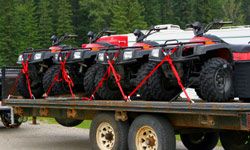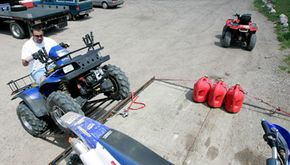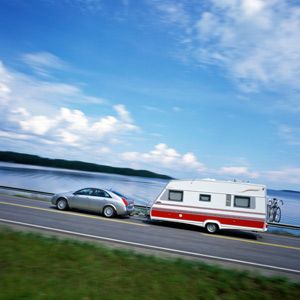No need to beat around the bush -- all-terrain vehicles are fun to ride. They give you a subtle sense of accomplishment as you negotiate rutted and overgrown trails that would stop a bigger and less agile vehicle in its tracks. And after you've experienced the adrenaline rush of riding for a day or a weekend, you can go back to the "real world" pressures of work or school filled with a peaceful calm.
There's one not-so-little detail, however, that you must attend to in order to stay legal, safe and sane. That detail: transporting your ATV to and from the trail. Since riding an ATV on public streets is illegal in most communities (and with so many inattentive car drivers, it's just not a good idea), you'll have to tow it to the trail.
Advertisement
This article provides some ATV towing tips and explains the equipment you'll need for safely towing an ATV. What's the big deal, you ask? Can't you just toss it in the back of a pickup and head for the hills? Or if you really want to get fancy, lash it down to a flatbed trailer with a few strategically placed bungee cords?
Well, no.
As with motorcycles, the size and weight of ATVs mean that you must pay close attention to how you secure them. And of course, you should know how to safely operate any trailer that you use for your ATV towing. On the next page we'll give you a quick run-through of the most important ATV towing tips.
Advertisement





